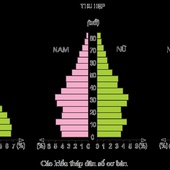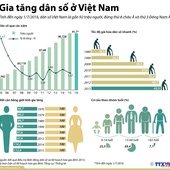Vietnam Population in 2025 - Trends & Updates
Vietnam’s population, once considered relatively young and at its “golden structure” stage in the early 2020s, is now undergoing notable demographic shifts as of 2025. The updated statistics below offer insights into the country’s transformation over the past two decades and its future direction.
Slowing Population Growth Rate
Over the last 20 years, Vietnam’s population growth rate has continued to decelerate—from 1.3% in 2000 to approximately 0.88% in 2025, marking one of the slowest periods since national reunification in 1975. The annual population increase has fallen from nearly 1,000,000 to around 800,000 people per year.
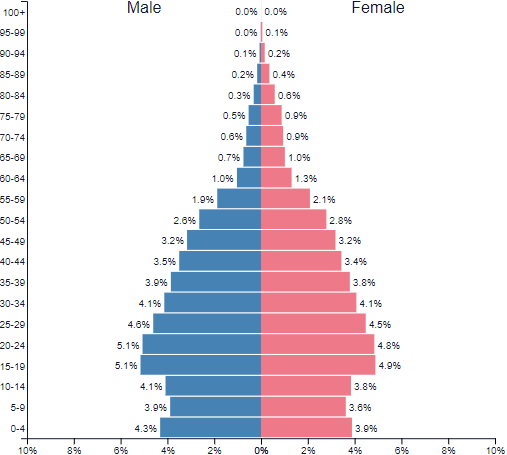
Slowing population growth rate shown in population pyramid – Source: populationpyramid.net
From 2005 to 2025, Vietnam’s population increased by roughly 20%, compared to 47.2% from 1980 to 2000. This deceleration is largely due to the national fertility rate stabilizing at around 2.0, following decades of aggressive population control policies. Today, the two-child norm remains deeply ingrained in urban Vietnamese society as a strategy to ensure better educational and economic outcomes for children.
A Rapidly Ageing Population
This long-standing low fertility rate, while successful in managing overpopulation, has also contributed to Vietnam’s rapidly ageing population. Since the early 2010s, the number of individuals aged 20–34 (the current and upcoming parent generation) has exceeded the population of children aged 0–19, reflecting a structural demographic imbalance.
As this younger cohort ages, the base of the population pyramid continues to shrink. Simultaneously, the share of older adults is expanding, leading to both slower population growth and accelerated ageing.
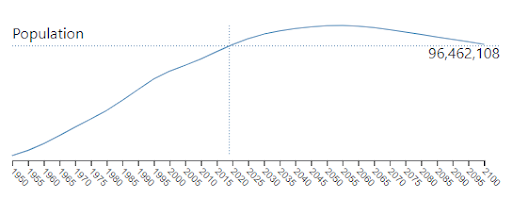
By 2025, individuals aged 60 and above account for an estimated 13.5% of the population—a proportion projected to nearly double within the next two decades. This raises increasing concerns regarding healthcare, pensions, and welfare infrastructure, especially in the context of ongoing brain drain and a workforce dominated by low-skilled labor. In response, the government has adopted a dual approach: incrementally raising the retirement age and promoting earlier marriage and larger families. However, reversing fertility decline is proving far more difficult than curbing overpopulation once was.
High Population Density and Urban Pressures
Despite slowing growth, Vietnam continues to face challenges related to population density, particularly in urban areas. With over 320 people per km² in 2025—more than six times the global average—major cities are grappling with severe environmental pollution, traffic congestion, and soaring real estate prices.
Government and private-sector investments in transport infrastructure and pollution mitigation have shown progress, but land scarcity remains a complex issue. Skyrocketing property prices have driven many businesses online, fueling the rapid growth of e-commerce platforms. Meanwhile, urban couples increasingly postpone marriage and childbirth due to housing affordability challenges, undermining the national goal of encouraging higher fertility. This lifestyle shift contributes to further declines in birth rates, particularly in metropolitan areas like Hanoi and Ho Chi Minh City.
Persistent Gender Imbalance at Birth
Vietnam remains one of the countries in Asia—alongside China and India—experiencing a pronounced gender imbalance at birth. The male-to-female sex ratio has grown from 106.2 boys per 100 girls in 2000 to an estimated 112.1 in 2025, far exceeding the natural rate of 105/100 (World Bank standard).
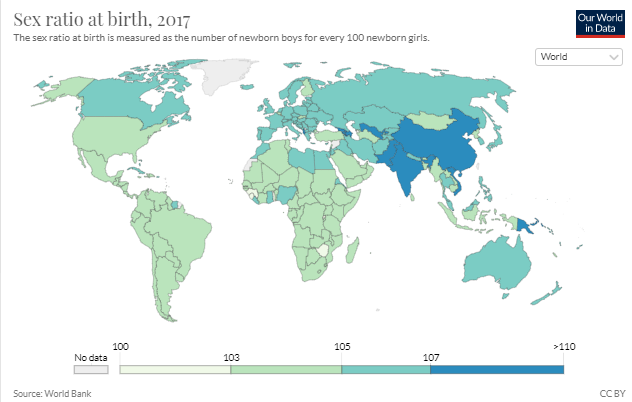 Sex ratio at birth around the world – Source: World Bank
Sex ratio at birth around the world – Source: World Bank
This imbalance will have long-term consequences: projections suggest that more than 1.1 million men aged 20–34 could face difficulty finding spouses within the next two decades. Rooted in a centuries-old cultural preference for sons, this issue remains difficult to reverse. In the short term, boosting eldercare services and increasing women’s economic empowerment are viewed as practical strategies to reduce the perceived reliance on sons for old-age support.
In summary, while Vietnam continues to benefit from its demographic momentum, key challenges—including ageing, urban density, and gender imbalance—require coordinated and sustained policy responses to ensure long-term social and economic stability.



